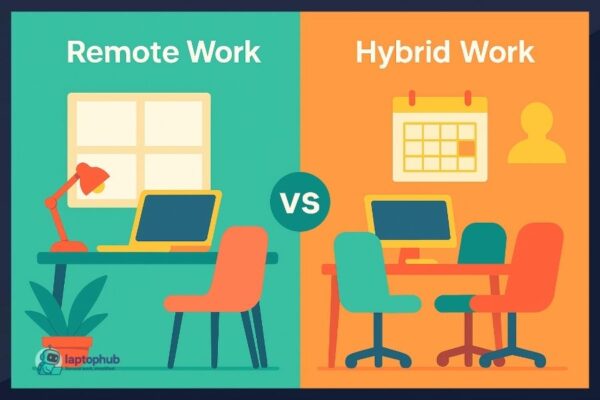The return to office isn’t just a shift in location—it’s a reflection of where workplace culture is heading. After years of remote work reshaping how people live and work, the push to bring employees back is raising questions about trust, productivity, and what it really means to thrive at work. Are companies reclaiming lost collaboration, or are they clinging to outdated habits? One thing’s certain: this transition is more than logistical—it’s deeply human.
💡Key takeaways:
- Many major companies are enforcing return to office mandates, reversing remote-first policies adopted during the pandemic.
- Employee reactions are split—some see value in in-person work, while others view it as a step backward for flexibility and trust.
- The transition back to the office brings logistical and emotional challenges including commuting, work-life imbalance, and mental fatigue.
- A successful return hinges on clear communication, flexibility, intentional office design, and hybrid models that value employee autonomy.
The Rise of Return-to-Office Mandates
The push to bring people back into physical workspaces isn’t just a corporate whim—it’s a full-blown trend. In the past 18 months, RTO policies have surged, with some of the most influential companies leading the charge.
Which Companies Are Enforcing RTO—and Why?
1. Amazon – Amazon has mandated that corporate employees return to the office five days a week starting in 2025. CEO Andy Jassy emphasized the importance of in-person collaboration and company culture. Business Insider
2. Google (Alphabet Inc.) – Google requires employees living within 50 miles of an office to work on-site at least three days per week or risk job termination. This policy is part of a broader cost-cutting initiative and strategic pivot toward artificial intelligence and infrastructure. LaptopHub
3. Meta (Facebook) – Meta has implemented a policy requiring employees to work from the office at least three days a week, focusing on enhancing collaboration and productivity. Tidaro
4. JPMorgan Chase – JPMorgan Chase has mandated that managing directors work from the office five days a week. The company believes that in-person work fosters better collaboration and mentorship. Axios
5. Goldman Sachs – Goldman Sachs has been a vocal proponent of full-time office presence, signaling a return to traditional corporate norms. leadgenius.com
6. Apple – Apple requires employees to return to the office at least three days a week, aiming to restore in-person collaboration. Business Insider
7. AT&T – AT&T announced a return-to-office policy requiring employees in certain roles to work on-site at least three days per week, prioritizing team collaboration and business outcomes. leadgenius.com
8. IBM – IBM mandates that all managerial roles report to an office at least three days a week, a policy measured by badging data. CoStar
9. Honda – Honda has issued a return-to-office mandate for its U.S.-based employees, requiring them to work on-site at least 80% of their work week starting October 6, 2025. LaptopHub
10. Intel – Intel’s new CEO has announced that employees will be required to work in-office four days a week starting September 1, 2025, to increase collaboration and productivity. LaptopHub
These moves aren’t arbitrary. Executives often cite decreased team cohesion, mentorship gaps, and weakened corporate culture as reasons to reel people back in. The belief is that innovation and performance flourish when people share physical space.
But is that assumption holding up in practice?
Employee Sentiments: The Divide Runs Deep
While companies are ramping up RTO policies, the reaction from employees ranges from cautious optimism to outright frustration. Surveys show clear divides between management and worker perspectives.
Enthusiasm from Some…
Some workers, particularly early-career professionals, are eager to return. They’ve missed face-to-face coaching, on-the-job learning, and spontaneous hallway conversations. For many, remote work created feelings of isolation and stalled professional growth.
…But Frustration from Many
However, the larger trend points toward resistance.
- A 2024 survey by Gallup found that 54% of employees with remote-capable jobs still prefer hybrid schedules, while only 8% want to return to the office full-time.
- FlexJobs reported that nearly 60% of workers would look for a new role if forced into a strict RTO policy.
For these employees, the shift back to the office feels like a loss of autonomy. After proving they could perform well from home for years, being called back often feels arbitrary—or worse, like a signal of distrust.
Challenges of Returning to the Office
Bringing people back to the office isn’t a switch you flip. It’s a complex transition that touches everything from mental health to team logistics.
1. Commute Fatigue
Pre-pandemic, long commutes were a tolerated inconvenience. Now, they’re a dealbreaker. Employees who moved further out of city centers for better work-life balance now face hours on the road again—plus the added costs of gas, tolls, or transit passes.
2. Work-Life Imbalance
Remote work allowed employees to tailor their schedules around family, health, or personal commitments. The return to rigid 9-to-5 structures puts that at risk. Parents, caregivers, and people managing disabilities are especially impacted.
3. Decline in Mental Health
For some, returning to the office triggers anxiety. Whether it’s social discomfort, health concerns, or simply the loss of routine, the change is emotionally taxing. Burnout is a real threat, especially when the return feels forced or poorly managed.
4. Erosion of Trust
If leadership spent two years praising productivity while working remotely, a sudden policy shift can feel disingenuous. When RTO is enforced without clear reasoning, employees begin to question the company’s values—and leadership’s honesty.
Making the Return Work: Strategies for a Smoother Transition
An effective return to office isn’t about mandates—it’s about intentional design. Here’s how both employers and employees can make the process less painful and more productive.
For Employers:
✔ Communicate the “Why”
Vague explanations won’t cut it. Be transparent about the business case behind returning. Whether it’s client needs, declining engagement, or team performance, employees need to understand the rationale.
✔ Prioritize Flexibility Where Possible
Consider hybrid models that offer core in-office days and optional remote days. One-size-fits-all rarely works, especially in diverse teams with varying roles and personal obligations.
✔ Reimagine the Office Experience
Don’t bring people back to sit on Zoom calls in cubicles. Invest in collaborative spaces, quiet zones, and wellness perks. Make the office a space people want to be in.
✔ Lead by Example
Executives must model the behavior they expect. If leadership stays remote while demanding in-person work, credibility goes out the window.
✔ Reinforce Culture Without Micro-Managing
Focus on building trust and connection, not just monitoring attendance. Culture doesn’t come from presence alone—it comes from purpose.
For Employees:
✔ Reset Expectations and Boundaries
Don’t assume your home-based productivity habits will transfer neatly. Establish routines that protect your time, energy, and focus in an office setting.
✔ Use In-Person Time Strategically
Focus your in-office days on relationship-building, decision-making, and visibility. Save solo tasks or deep work for remote days if hybrid is allowed.
✔ Speak Up—Productively
If RTO is hurting your work-life balance or mental health, don’t suffer in silence. Have honest, respectful conversations with your manager or HR.
✔ Stay Adaptable
The workplace is still evolving. Staying flexible and solutions-oriented helps you stay ahead and maintain career momentum, no matter where you work.
The Future of Work: What’s Coming Next?
Return-to-office mandates may be trending, but that doesn’t mean we’re headed back to 2019. The future will likely blend flexibility, autonomy, and accountability.
Hybrid Work: The Sustainable Middle Ground
Most experts agree that hybrid work is the long-term destination. According to Microsoft’s Work Trend Index, 70% of employees want flexible remote options, while 65% crave more in-person time with their teams. That paradox points toward hybrid setups as the most viable solution.
But hybrid work isn’t just a calendar adjustment—it’s a strategy. Companies that do it well:
- Define clear expectations around in-office days
- Use technology to unify remote and in-person workers
- Train managers to lead distributed teams
A New Role for the Office
Expect office spaces to evolve. Cubicles and open-floor plans may give way to modular, purpose-driven environments. Think team rooms, client huddle areas, and creative labs.
Tech Will Be the Great Enabler
From asynchronous tools to immersive VR meetings, tech will continue reshaping how we collaborate. AI tools (like workflow automation or smart scheduling) are already streamlining tasks and removing friction between remote and in-person teams.
Generational Influence Will Matter
As Gen Z becomes a larger part of the workforce, expectations will shift again. Younger workers value flexibility—but also mentorship and community. Companies that offer both will win top talent.
Return to office FAQs
Many companies believe in-person work improves collaboration, innovation, and team culture, which they feel has declined during extended remote work.
Responses vary—some welcome the structure and social interaction, while others prefer remote work for its flexibility and reduced stress.
Common issues include commuting time, loss of work-life balance, decreased autonomy, and increased mental fatigue.
Yes, most workplace experts agree hybrid work is the most sustainable long-term model and will likely become standard across industries.
Companies can improve the transition by offering flexible schedules, upgrading office spaces, listening to employee feedback, and clearly explaining their reasons.
Final thoughts: Forward, Not Backward
Returning to the office doesn’t have to mean returning to the past. It can be a turning point—a chance to build workplaces that respect flexibility, foster connection, and prioritize people as much as performance. Whether you’re leading a team or just trying to find your footing again, how we handle this shift will shape the next decade of work—not just where we work, but how we work together.
One thing is clear: the future of work isn’t fully remote or fully in-office—it’s fully human.





